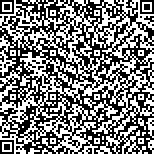| 摘要: |
| 2007年秋季搭载开放航次对黄海、东海、南海3个海域共10个站位的小型底栖动物组成、丰度和生物量,以及环境因子进行了调查研究。3个海域小型底栖动物的平均丰度以黄海最高,为(2 132±946) 个/10 cm2,东海次之,为(1 954±2 047) 个/10 cm2,而南海仅(156±56) 个/10 cm2;平均生物量(干质量)依次为(2 193±1 148) μg/10 cm2、(1 865±1 555) μg/10 cm2和(212±22 ) μg/10 cm2。3个海区分选出的14个小型底栖动物类群中,丰度上均以自由生线虫占绝对优势,分别占总量的85%、89%、85%。在生物量上,黄海以自由生线虫贡献最多(33%),多毛类居次;东海二者比例相近(约为37%),而南海则以多毛类占绝对优势(56%)。在小型底栖动物的垂直分布上,3个海区差异较大:分布于沉积物表层0~2 cm的小型底栖动物在黄海高达90%,东海仅46%,在南海为63%。统计分析表明, 本研究站位小型底栖动物丰度与沉积物中的叶绿素及脱镁叶绿酸含量和底温呈显著正相关,与水深呈显著负相关。该结果与本航次之后在广东湛江和海南以东的南海海域开展的908调查结果形成了鲜明对照,后者的小型底栖动物及线虫丰度与沉积物中有机质含量呈显著正相关,与水深呈显著负相关,表明近海受人类干扰影响较大。
|
| 关键词: 黄海 东海 南海 小型底栖动物 丰度 生物量 |
| DOI: |
| 分类号: |
| 基金项目:中国科学院知识创新工程重要方向项目(KZCX2-YW-417);国家自然科学基金项目(40576072;40706047) |
|
| Spatial distribution of meiofauna in autumn and their relation to environmental factors in China seas |
|
WANG Jia-dong,LEI Yan-li,XU Kui-dong,MENG Zhao-cui
|
| Abstract: |
| Meiofaunal group composition, abundance, biomass and environmental parameters obtained from ten sampling stations in the Yellow Sea, East China Sea and South China Sea (from 17°N to 20°N, 109°E to 112°E) were investigated from September to October in 2007. Mean abundances of meiofauna in the three sea areas were (2 132±946) inds./10 cm2, (1 954±2 047) inds./10 cm2 and (156±56) inds./10 cm2, respectively. Mean meiofaunal biomasses in the three sea areas were (2 193±1 148) μg/10 cm2, (1 865±1 555) μg/10 cm2 and (212±22) μg/10 cm2, respectively. Among the 14 main meiofaunal groups sorted, free living nematodes were the most abundant and contributed 85%, 89% and 85%, respectively, to the total meiofauna abundance in the three sea areas. However, the biomass contributions of dominant meiofaunal groups were different among the three sea areas. Nematodes contributed to 33% of the total biomass in the Yellow Sea, followed by the polychaetes. In the East China Sea the two meiofaunal groups have the similar contributions (37%), while in the South China Sea polychaetes contributed to 56% of the total biomass. The investigation on the vertical distribution of meiofauna suggested that about 90%, 46% and 63%, respectively, of the total meiofauna occurred in 0~2 cm depth in the three sea areas. Statistical analyses showed that the abundances of total meiofauna and dominant groups were significantly positively correlated to the concentrations of chlorophyll a and phaeophytin a in the sediments and benthic water temperature but negatively correlated to the water depth. Our results contrasted with the study carried out in the 908 Cruise, where the abundances of total meiofauna and nematodes were only positively correlated to organic matter, indicating the sampling stations of the 908 Cruise were more impacted by human activities than those of the present cruise.
|
| Key words: Yellow Sea East China Sea South China Sea meiofauna abundance biomass |
